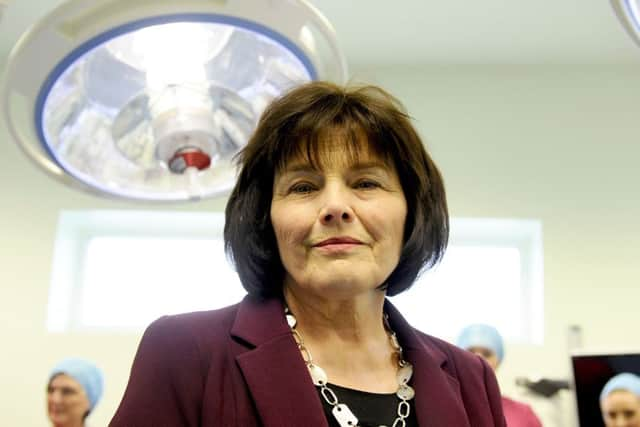SNP's 'UK austerity' cat-call does not explain NHS funding crisis – Brian Wilson
The call from Scotland’s doctors to boost NHS spending, in line other affluent countries, should be treated as more than wishful thinking.
Like Pavlov’s less thoughtful dogs, the Scottish Government’s response pointed to “UK Government austerity” and provided a numerical figure (over-stated) of “£14 billion” for NHS expenditure this year.
Advertisement
Hide AdAdvertisement
Hide AdUntranslated, it is a meaningless number. The question is whether, within the Scottish Government’s devolved powers, we could and should be spending more on the NHS and the evidence demands answers.


According to the House of Commons Library, in 2016-17, per capita spending on the NHS in England was £2,169 against our £2,332. Inevitably, we spend more because of geography, demography and other factors that justify the Barnett Formula. These explain why public expenditure is 16 per cent higher than in the UK as a whole and almost 20 per cent above the English figure. But hang on! NHS spending is only seven per cent higher than in England – which requires explanation.
If, let’s say, we had spent 12 per cent more than in England – still well within any calculation of overall differential – the result would have been an additional half billion for the NHS in Scotland.
While that is still well short of the British Medical Association Scotland’s figure of a £3 billion-a-year increase to bring Scotland into line with similar EU countries, it illustrates that a substantial element of prioritising lies within the Scottish Government’s remit.
The fact the overall numbers are big – £14 billion sounds a lot – has been used over the past decade to bury inconvenient questions about why differential NHS spending is so relatively low. In other words, where does the money go – and where will it in future, as increased powers, particularly over benefits, enhance potential for obfuscation and the mindless invocation of “UK Government austerity” for every downside to devolved decision-making which favours other priorities.


Last October, Audit Scotland delivered a scathing report on the failure of the NHS in Scotland to meet targets against a dire financial backdrop. Health boards were asked to make “unprecedented savings” of almost half a billion pounds and “increasingly do not know where future savings will come from”.
It was particularly harsh on lack of information about funding and strategic decision-making, observing: “If health and care services are to change to meet the needs of Scotland’s people, then the NHS and the Scottish Government must become more open. People need access to information if they are to have an honest debate about the future of the NHS...”
Amen to all that. But there is precious little sign of it happening as the cuts, blame-shifting and edicts pour forth.
Advertisement
Hide AdAdvertisement
Hide AdMeanwhile, to take one example, in Glasgow’s children’s hospital, a private company with its own highly paid, self-employed nurses and doctors has been hired to catch up on a backlog of cases with follow-up left to the NHS. How much of this is going on and at what cost?
Another essential part of the debate must be capital funding, amidst the developing scandal over Edinburgh’s children’s hospital. With a little help from this column, the Scottish Government can no longer disguise its reliance on a modest variation of the Private Finance Initiative and there surely must now be transparency around every deal.
Doctors and nurses are due an explanation from Health Secretary Jeane Freeman of why Lothian Health Board has been paying £1.4 million a month since February for a hospital that cannot open. Does this imply acceptance of public sector responsibility for the whole fiasco?
When did she know the extent of problems and why was the pretence of readiness maintained until days before the intended opening? There are many questions for Ms Freeman while her plea not to “personalise” them carries particular irony.
First as a civil servant and then as Special Adviser to Jack McConnell between 2001-5 with responsibility for health and finance, she was up to her neck in supposedly ensuring PFI/PPP deals offered good value. Yet, just a few months ago, she had the brass neck to tweet about their “toxic legacy”.
Perhaps it is her own impending legacy that should now cause her some concern. Quite literally, our NHS cannot afford the price of failure.